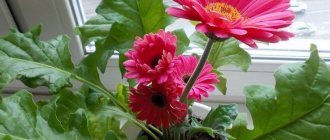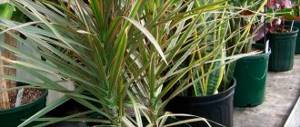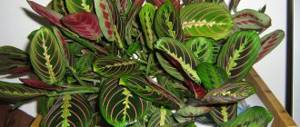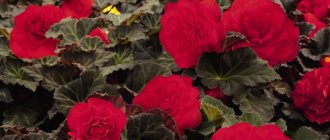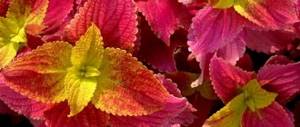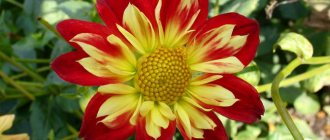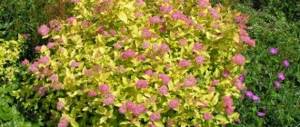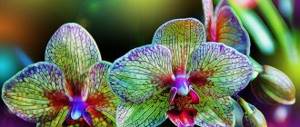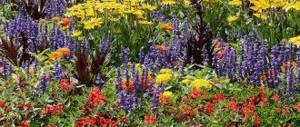Until the very frost, the garden plot is decorated with magnificent hydrangea; planting and caring for it will not cause any particular difficulties for amateur gardeners. The plant is rarely affected by diseases or pests. It is also weather resistant. Large inflorescences densely dot the bush, almost completely hiding the foliage. Garden hydrangea will effectively decorate the free areas between the trees. Their crowns will protect the delicate petals from the direct rays of the sun and retain the moisture necessary for the shrub. In suitable conditions, the shrub can grow up to 2 m. In order for the plant to delight with lush flowering, it is necessary to choose the right planting site.
Choosing a landing site
The plant does not tolerate drafts and strong winds. For shrubs, it is better to choose areas located near buildings. It is not recommended to plant hydrangea close to a building, so as not to cause it to freeze in the winter.
Hydrangea is a light-loving plant. She does not tolerate dense shadow. An area with light openwork shade under trees with a sparse crown is ideal. They will create the diffused light necessary for the leaves of the bush. The base of the plant may be in the shade.
It is better to choose a place with neutral or slightly acidic loose soil rich in organic matter. Land with a high concentration of lime is not suitable for planting. In such conditions, the hydrangea will wither and its leaves will turn yellow.
Hydrangea blooms more abundantly if it is planted in a low area. In winter, the roots of the plant are reliably protected by a large layer of snow, and in summer a lot of moisture accumulates in the area.
You should not plant shrubs next to trees and shrubs that have a superficial root system. There may be a competition between plants for moisture and nutrients in the top layer of soil.
Caring for tree hydrangea
Gardeners value tree hydrangea for its good winter hardiness, rapid growth, ease of rooting and abundant flowering. Modern varieties are unpretentious to soil, temperature and weather changes.
Temperature
Hydrangeas do not need any special temperature conditions outside in the garden. This is a winter-hardy plant, but in mid-latitudes and further north it is better to cover the shoots with spruce branches or a special cloth for the winter. Even if the bush freezes, it will quickly recover in the spring and bloom on schedule.
Lighting
Despite the abundant flowering, tree hydrangea does not like an excess of bright sun. To avoid burns, try to choose a place so that at noon it is in partial shade. Then the bushes grow larger and bloom more profusely.
Watering
Tree hydrangea loves moisture, so it tolerates overflow better than drought. Provide the bushes with regular watering of 15-20 liters 1-2 times a week. During rains, you can reduce the frequency so that the root system does not begin to rot.
The soil
Hydrangeas love loamy soils of medium and high acidity, but do not tolerate alkaline soil well. Before planting, use peat, compost, sod and leaf humus. Don’t forget to mulch the soil immediately after sprouting with a layer of 5-8 cm thick.
Fertilizers and fertilizing
The lushly blooming tree hydrangea loves fertilizer, so it is fed four times on a schedule. Complex nitrogen fertilizers in early spring to gain green mass, and then potassium and phosphates during the formation of buds. Distribute the remaining fertilizing evenly throughout the summer.
Transplantation and propagation
Mature powerful shrubs can be propagated by division when transplanting. Another convenient method is layering, which needs to be buried 1.5-2 cm and given support. The following year, these cuttings can be separated and replanted from the mother plant. Hydrangea cuttings always take root, but they need to be prepared in advance - in early June or mid-summer before the shoots become lignified. Cut a stem with 2-3 pairs of leaves and treat the cut with a preparation for root growth. The rooting process in a shady place under a bottle or in a greenhouse takes up to a month. Hydrangeas are replanted in early spring before buds appear, but seedlings from containers can be planted throughout the season. Be careful not to damage the earthen ball and root system. Immediately after transplantation, you need to prune and generously water the bush, and after 3-4 weeks, feed it.
Trimming
After planting, young plants need to be pruned and all damaged and weak shoots removed so that they grow lush and strong. For the next couple of years, do not touch the bushes and only in the fourth year, in early spring, begin to carry out formative pruning before fertilizing. You can rejuvenate old bushes by radically pruning all branches to 50 cm.
Growing seedlings
You can grow a shrub from seeds. They are planted in the ground in the fall. It is necessary to prepare a nutritious loose mixture of peat and leaf soil with the addition of river sand (in a ratio of 2:4:1).
The substrate is poured into a container and seeds are sown in it. They are sprinkled with an earthen mixture on top and irrigated with water from a sprayer. After this, the container is covered with polyethylene. As the substrate dries, it should be moistened. The film must be removed periodically for ventilation. The optimal temperature for growing is 14 - 20°C. After 4-6 weeks, shoots will appear. From this moment, the film is removed from the container. Seedlings dive immediately after the leaves appear.
In May, you need to plant the seedlings in separate containers. During the day, the pots are taken outside to harden. The place should be protected from rain, drafts and direct rays of the sun. Emerging buds must be removed so that the plant is not weakened by flowering. Plants spend the cold season in a cool room. After 2 years, the seedlings are planted in open ground.
You can buy several seedlings from the manufacturer. It is better to order small wholesale and plant several plants at the same time.
Garden or large-leaved hydrangea - planting and care
Spring is the best time to plant garden hydrangea (Hydrangea Macrophylla), a beautifully flowering ornamental shrub. The buds on the trees have not yet blossomed, but when the snow has already melted, you can start planting. Today I will share with you information about growing this wonderful plant.
Landing
In the photo: garden hydrangea - Glam Rock variety
Under each seedling, dig a hole 50x50 cm in size and 50-60 cm deep.
A deeper hole is not needed, since the plant’s root system is superficial.
Prepare a mixture of humus with peat and sand 2:1:1, add 50 g of mineral fertilizer. Hydrangea prefers loose, acidic soil rich in humus. You can sprinkle a couple of handfuls of half-rotted pine needles, pine bark, and cones.
At the bottom of the hole, collect the earth in a slide. Place the bush on the “hill”, straightening the roots. Fill with soil mixture and water. You can deepen the root collar a little - 2-3 cm.
Soil acidity can be easily determined by the plants growing in the area. Coniferous trees - pines, spruces, deciduous trees - aspen, rowan, as well as herbaceous plants such as horsetail, horse sorrel, strawberries, and ranunculus grow on acidic soils.
You can also plant garden hydrangea in the fall, but if you bought a small seedling in late autumn, it is better not to plant it in open ground. Plant it in a bowl and place it in a bright window until spring.
general information
Hydrangea (Hydrangea) - this genus of ornamental shrubs has 23 species, but only 8 of them have received the attention of gardeners (G. tree-like, G. large-leaved, G. petiolate, G. paniculata, G. oak-leaved, G. ground cover, G. rough, G. serrated).
Garden hydrangea (large-leaved) (Hydrangea Macrophylla) is one of the most beautiful and widespread species in cultivation. In the wild it grows in different climatic zones, in favorable conditions of a warm climate it reaches a height of 4 meters.
The shrub has oval simple leaves of bright green color. Inflorescences with a diameter of 10-15 cm consist of many flowers of pink, blue or white. In cultivated hydrangea, garden caps reach 20 cm in diameter.
The best varieties of garden hydrangea
The flowers of the "Red Sensation" hydrangea are a striking brilliant red in summer and turn pastel burgundy in the fall. Winter-hardy variety, can withstand winter temperatures down to -30 C. Always blooming - flower buds are formed on the shoots of both the previous and current year. Even if last year's shoots freeze, inflorescences will appear on the current year's young shoots.
The frost-resistant variety “Endless Summer” was bred in America in 1988. Always blooming. In a shaded place it reaches a height of 1.2 m. However, in the sun, the size of pink inflorescences reaches 30 cm in diameter on low shoots - about 0.5 m. This variety became the basis of the “Endless Summer” series of varieties.
Changing the color of hydrangea flowers
The shrub can change leaf color when the acidity of the soil changes. Let's say the soil on your site is acidic. If the seedling grew in neutral or slightly alkaline soil, it will adapt for some time, and over the course of several years the color of the flowers will change from pink-red to blue and even blue.
Changing color from blue to pink is more difficult. To do this, you need to change the acidity of the soil to slightly alkaline. Plant your bush closer to the foundation of the house or cement blind area. Lime, getting into the ground, changes its reaction to the alkaline side and changes the color of the hydrangea to pink.
A slightly alkaline soil reaction can be achieved using the Kemira fertilizer. Calcium nitrate." White varieties of garden hydrangea do not change color.
How to prepare hydrangea for wintering
On the territory of our country, garden hydrangea does not grow in cultivation everywhere; for example, it will not be able to winter in the Siberian climate, since it can withstand winter temperatures down to -23 C. In central Russia it is a covering shrub - hydrangea winters safely under cover, but spring frosts return can easily damage flower buds, and then the bush does not bloom.
In the fall, before sheltering, water the hydrangea well for a while so that it can more easily endure the winter.
At the end of October, cover the roots and especially the shoots of the bushes. Try to preserve the shoots in winter, since the flower buds are on the shoots of the previous year. Remove leaves from the shoots using pruning shears, but remember that it is in the axils of the leaves that the flower buds are located, do not damage them with the pruning shears!
Bend the shoots to the ground, and then build a shelter over the bush. You can put a wooden box or build a “pyramid” from wooden slats. Cover the top of the bushes with roofing felt or some covering material, for example, lutrasil, agrotex (in several layers).
You can put spruce branches or dry branches on top to secure the shelter. Sprinkle peat, dry wood shavings or dry leaves onto the roots. And fill the bush itself with the first snow on top.
In the spring, gradually remove layers of cover, leaving lutrasil in one layer until the threat of return frosts disappears. Otherwise, you may lose flower buds overnight.
Watering and fertilizing
The Latin name of hydrangea “Hydrangea” indicates that the plant loves water very much. This is understandable - after all, its leaves have a large area of evaporation, the flower caps have a large plant mass, and the root system is superficial.
Provide drip watering for hydrangeas. Mulching the soil is necessary, especially in sunny places. If you can't water your plants regularly, plant them in partial shade! With sufficient watering, the plant is unpretentious to the location, but blooms longer in partial shade.
In the spring, be sure to feed the plant with mineral fertilizer with a high nitrogen content. At the beginning of summer, add organic matter under the bushes - rotted compost or manure, leaf humus. At this time, you can use mineral fertilizers with a high content of potassium and phosphorus. For pre-winter feeding, use Kemira fertilizer. Autumn."
Soil preparation and planting
For planting, a nutritious and loose organic mixture of peat, pine needles, humus and garden soil is prepared. If your garden plot has clay soil, drainage should be prepared. It is best to use expanded clay or pieces of broken red brick.
The color of the inflorescences depends on the acid-base reaction of the soil.
On slightly alkaline and neutral soils, garden hydrangea will bloom with pink flowers. On acidified soil, the bush will be covered with blue or even blue balls.
To produce the blue pigment of hydrangea, aluminum is needed: to obtain blue and blue hydrangea flowers, the acidic substrate must be enriched with aluminum salts.
The pink color of the inflorescences appears due to the fact that aluminum is in an insoluble form. Phosphorus promotes the binding of aluminum. In acidic soil with a high amount of phosphorus, hydrangea inflorescences will have a pink color.
At the planting stage, you need to determine what color the inflorescences will have. Later it will be more difficult to change the color of the flowers.
To get the rich blue tint of the inflorescences, the soil pH should be between 5.0 and 5.5. In soil with a higher pH level, hydrangea flowers will have lavender and lilac tones.
The soil is acidified at a depth of 25 - 35 cm. You can also completely replace the soil in the pit with one previously prepared with the required pH level. Acidify alkaline soil with high-moor peat.
In acidic soil, it will not be possible to reveal all the beauty of the shrub with pink inflorescences of the Early Sensation variety. The description of the variety may not correspond to the characteristics of the plant. The magnificent Early Sensation garden hydrangea, a photo of which is presented in our article, will have lilac shades. In order for hydrangea flowers to acquire a pink tint, it is necessary to raise the pH level of the soil to 6.0 - 6.5. A higher pH can kill hydrangeas. You can raise the pH level using dolomite flour, chalk or ground limestone.
Planting seedlings
Summer seedlings are planted in open ground in the spring. If you want the bush to bloom as soon as possible, you should immediately choose a five-year-old plant. If favorable conditions are created, it will bloom in the summer of the year of planting.
- The distance between bushes should be at least 1 m.
- For the plant, you need to dig a hole twice the size of the seedling's earthen ball.
- The seedling is taken out of the pot in a lump, the soil is carefully shaken off and dipped into a bucket of water. The moistened roots curled around the seedling are carefully straightened and directed downward.
- The plant needs to be trimmed a little. At the same time, the roots and annual shoots are shortened.
- Along with the soil, organic and mineral fertilizers must be added to the planting hole. They will help the shrub form strong flower buds by next year.
- Near the roots of the planted plant, you need to remove as much old soil as possible down to the young roots, replacing it with the prepared mixture.
- The planted plant should be watered generously and the soil around the roots should be sprinkled with leaves.
Shrub care
To properly care for a flower, you should follow some rules:
- The plant requires regular watering on demand. The soil should not dry out. Lack of moisture will cause shredding of flowers, lethargy and pale foliage.
- Mulching with pine needles or bark will help keep the soil moist.
- It is necessary to loosen the soil regularly and in a timely manner.
- Do not overload the soil with fertilizers. Excess nutrients will cause too large inflorescences to form. Branches may break under their weight.
- When the first leaves open, you need to tie up the branches of the bush. This measure will help avoid curvature of the shoots.
- The plant needs to be fertilized in winter and autumn. It is better to use special products made for hydrangeas.
- To maintain an acidic pH level, it is necessary to regularly water the shrub during growth and development with aluminum sulfate (30-40 g per 10 liters of water). One plant needs 2-3 buckets. If there is not enough aluminum sulfate, the color will begin to change. The solution is poured only into moist soil.
- To maintain a slightly alkaline pH level, it is necessary to add chalk or ground limestone several times a year.
- To achieve bright pink shades, you need to feed the bushes with fertilizers with large amounts of phosphorus and nitrogen.
- With regular pruning, garden hydrangea will bloom profusely. In spring, prune branches before foliage appears. Annual growths are shortened, leaving no more than 5 pairs of buds. In autumn, all inflorescences are cut off, leaving 3 - 4 buds on the branch.
- If the tree trunk circle is mulched with humus, the bush does not need to be covered for the winter.
Hydrangea varieties
Today, several varieties of this shrub are known. The most popular are:
"Bella Anna" is a new variety of tree hydrangea. During the flowering period, about 100 spherical inflorescences are formed on the bush. The crown of an adult plant reaches up to 4.5 m. The color of the flowers is pale pink. The flowering period lasts from early June to late September.
"Annabelle." This shrub has a wide, spreading form, the diameter of which reaches up to 2.5 m. The inflorescences are presented in the form of snow-white balls of dense shape.
Flowering begins at the end of May and continues until the beginning of October. Caring for hydrangea does not require much effort. It needs to be fed with mineral fertilizers in early spring and timely pruning in late autumn.
"Grandiflora" is a variety of large-leaved hydrangea. An adult plant has wide leaf plates, the size of which reaches up to 30 cm. The inflorescences are dense, crystal-white caps.
The shrub prefers moderate lighting and timely watering. In spring, hydrangeas are prepared and dry branches are partially pruned. Fertilizing is carried out in the fall. The composition must contain: potassium, phosphorus, and mineral complex additives.
"Sterilis" is a variety of paniculate hydrangea. The flowers are united into dense panicles. The color of the inflorescences is light pink, white, blue. In early spring, the flowers have pale shades. Gradually they begin to acquire rich colors that will not leave anyone indifferent.
Garden hydrangea is planted in late autumn at the end of October. During this period, the vegetative growth of the plant ends. This shrub perfectly withstands severe frosts. In addition, it quickly recovers after a hot summer or cold spring.
"Vanilla Fraise" - this hydrangea has soft pink inflorescences in the form of a long candle. An adult bush reaches 5 m in diameter. Flowering lasts about 4 months depending on climatic conditions.
Experienced gardeners recommend covering hydrangeas for the winter with thick burlap. This will preserve the long lashes of the bush for subsequent flowering.
The most popular varieties of hydrangea
The numerous types of hydrangea are amazing. One of the most famous and beloved among gardeners is paniculata hydrangea. The plant reaches a height of 3 m. Its inflorescences have a characteristic pyramidal shape. They exceed 20-25 cm in length. The ovoid leaves have a pubescent edge. It is more pronounced in the lower part of the leaves.
Early varieties of paniculata hydrangea bloom already in June. Other species begin to bloom luxuriantly in July. The color of flower petals changes over a long flowering period. The snow-white inflorescences gradually turn pink. Towards the end of flowering, greenish shades begin to predominate in the color. Hydrangea varieties live up to their names.
The panicle hydrangea variety Pinky Winky has beautiful cone-shaped inflorescences. Gradually they acquire a pink-purple color. The Pinky Winky bush can grow up to 1.8 m.
The description of the Vanille Fraise variety evokes associations with dessert. The plant has lush and dense cone-shaped inflorescences, reminiscent of whipped cream. The strawberry pink color enhances the resemblance to the treat. The shrub rarely grows above 1 m.
Tree hydrangea, photos of which are presented in our article, are no less popular among gardeners. The plant grows up to 1.5 m. It is distinguished by the regular spherical shape of the crown. Hydrangea leaves have jagged edges. They are green above and bluish below. The Annabelle variety has spherical snow-white inflorescences reaching 25 cm in diameter. The Hayes Starburst variety has stunningly beautiful inflorescences with double flowers. Their diameter exceeds 25 cm. The height of the bush is usually no more than 1 m.
Overview of the main types
It is worth noting that not all types of garden hydrangeas take root well in our latitudes, so we will consider only those options that have proven themselves well in our climatic conditions:
| Paniculata | This variety is a shrub ranging from 2 to 5 meters in height or a small tree that can reach 10 meters in height. The flowers are quite small, collected in pyramidal inflorescences up to 30 cm long. A very unpretentious option with high frost resistance and good survival rate even in unfavorable conditions |
| Hydrangea Bretschneider | It blooms from July to August, small flowers are collected in umbrellas with an average diameter of 10 to 15 cm. The plant is a bush, the height of which can reach 3 meters. Among the advantages are frost resistance and good tolerance of insufficient soil moisture |
| large-leaved | The most common option in the world, which is very popular due to its beautiful flowering - inflorescences can reach 30 centimeters in diameter. The leaves are large, oval in shape, and the shrub reaches an average height of 2 meters. The biggest drawback is the need for additional insulation for the winter. |
| Garden petiole hydrangea | A very unusual option, which is a lush vine that can rise to a height of up to 25 meters, and in the absence of supports it spreads along the ground. An excellent option for garden arches: by intertwining them, you can get a very beautiful composition. |
| Gray | This variety of hydrangea is excellent for creating hedges and is characterized by its small height (up to 2 meters) and a long flowering period, which stops only in late autumn |
| Tree-like | One of the most attractive options is that lush, dense inflorescences give the bushes an elegant look. The average height of the shoots is about 3 meters. Tolerates frosts moderately; pruning is required every spring. |
Tree hydrangea stands out for its abundant flowering
Photo gallery
In our photo gallery you can see all the splendor of hydrangea in the photo.

